It Sounded Like An Explosion!
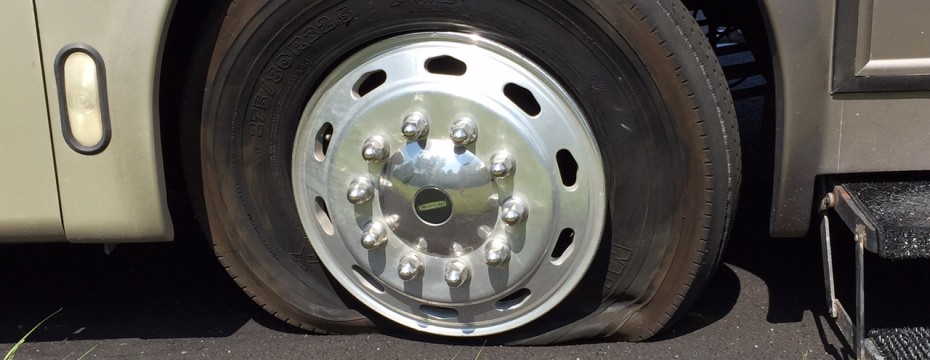
A couple of months ago, we had the unfortunate experience of a tire blowout while driving on the New Jersey turnpike. There was an explosive sound and a pulling force toward the right. Our front passenger tire had blown out. What a scary moment it was. Thankfully, we maintained control and steered to the roadside while slowly breaking. We had only been on the road for about 30 min and had just checked the tire pressure so this blowout was likely due to the age of the tire. We were aware that our tires were due for replacement, but we just hadn’t added it to our schedule yet. Fortunately we are all safe and our home was not damaged.
- RV Beagle
- RV Beagle
A phone call to our roadside assistance quickly connected us to Inner City Tire, who had the tire we needed in stock and sent a service truck out to help us. There was a long wait for our help to arrive, the first truck broke down so they had to get a different truck and try again. After arriving, the tire change was quick and we were back on our way.
- RV Beagle
- RV Beagle
I believe the most important thing to do if you ever experience a tire blowout is to stay calm, if you react calmly and confidently you will have a far better chance of maintaining control and safely navigating to the shoulder. Don’t do anything abruptly like jerking the steering wheel or slamming on the brakes; just hold the wheel firmly, slow down gradually and steadily, and move safely to the side of the road.
Knowledge is key when being proactive about road safety. Here’s some information about tire age and tire blowouts from extremervguy.com, there is much more information available about this on his site.
“The tread is made so that the vehicle can cover large distances and still remain in tact. The most important factor however in avoiding blowouts is the age of the tire. The main cause of a blowout can in the majority of the cases be attributed to the age of the tire.”
“You should really be changing your tires once every seven years. Natural oils found in the side walls of a tire will dry up over time with exposure to the sun and the elements. Small cracks will start to appear at first and these will soon convert into larger ones until finally your tire blowout on you.”
“After checking the tread of your tyres and the sidewall for cracks you should then take look on the sidewall for the DOT number. There should be a set of numbers on the side wall marked DOT which will consist of a string of numbers and letters. It is normally in the format of DOT xxxxxxxx0393, the ultimate digits will represent the month and the the year of manufacture.”
“Another cause for a tire to blow out can be under inflation. It is easy to be tempted into running with lower tire pressure to get an ‘easy ride’, this will only create more heat and will lead to problems.”
We had shared this video from Michelin on our Facebook Page a while back, it is an important video to share again.
Here is our new tire, installed, aired up and ready to roll, we are back on the road and happy everything went smoothly.
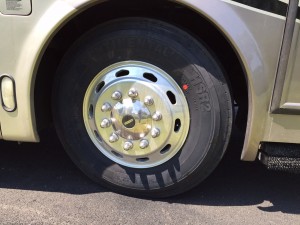
RV Beagle
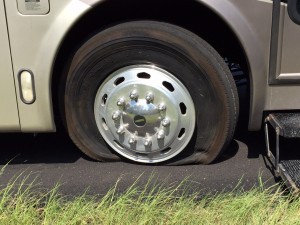
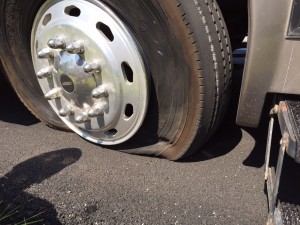
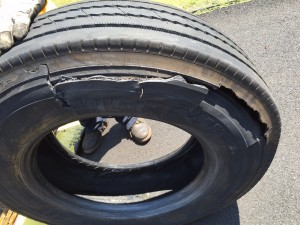
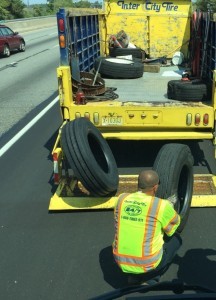
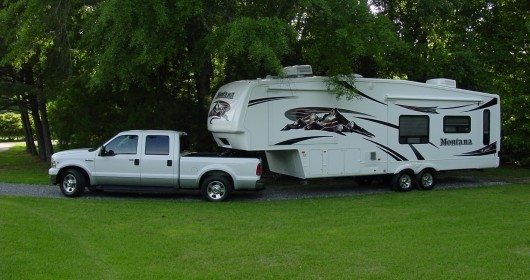

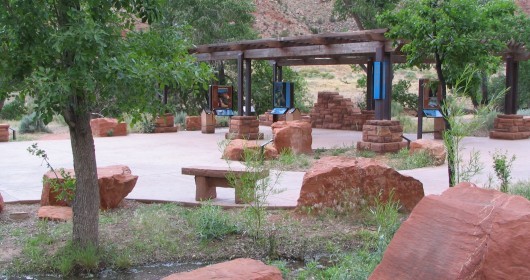
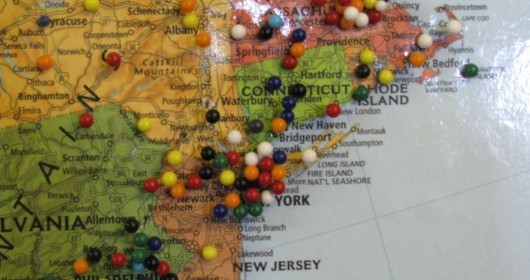
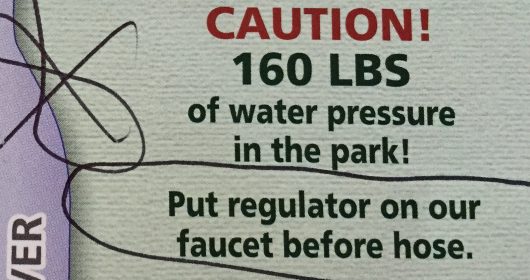
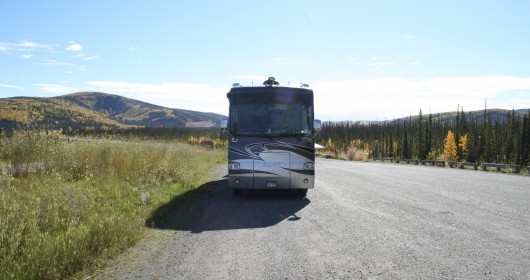
Leave a Reply